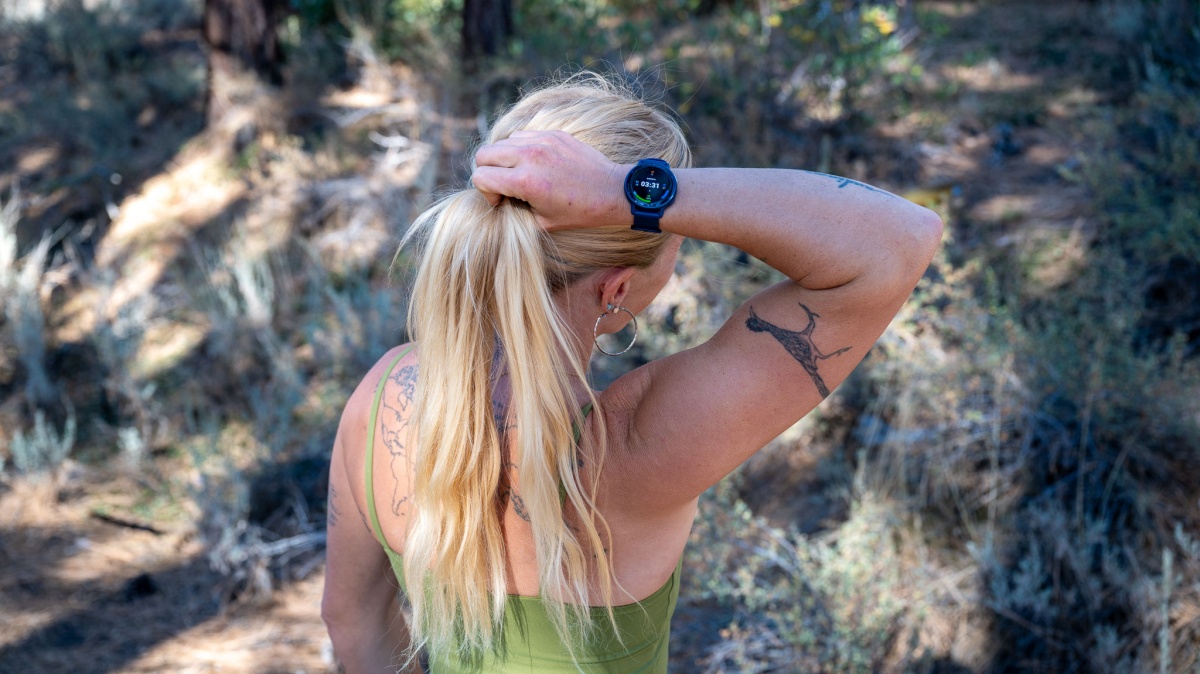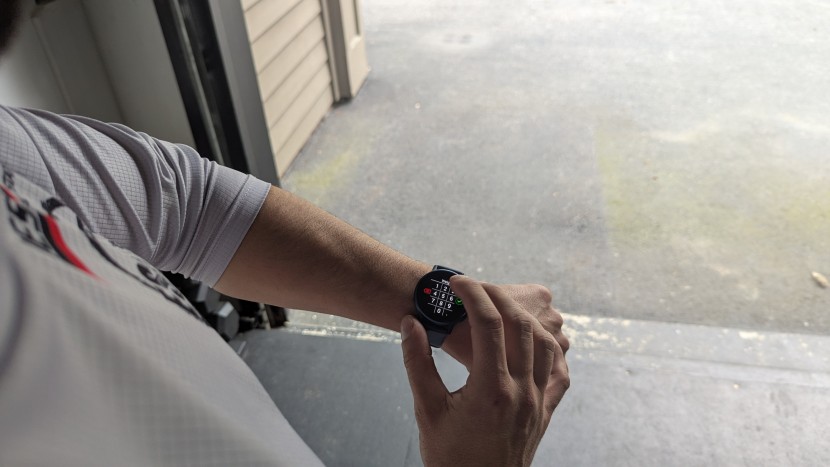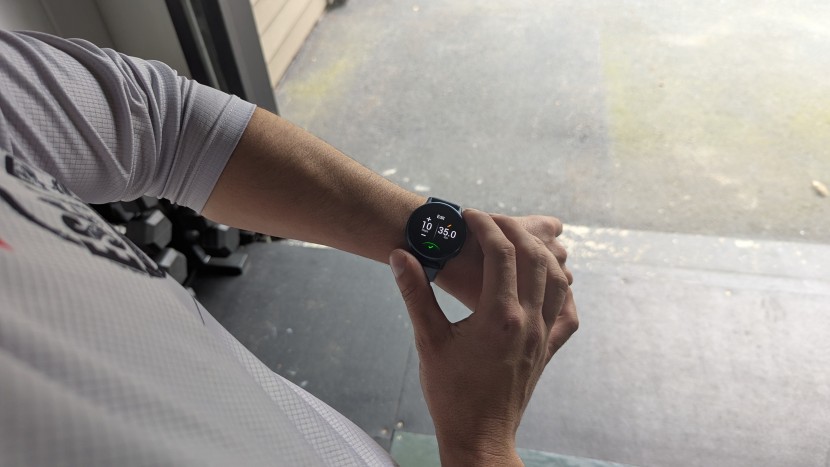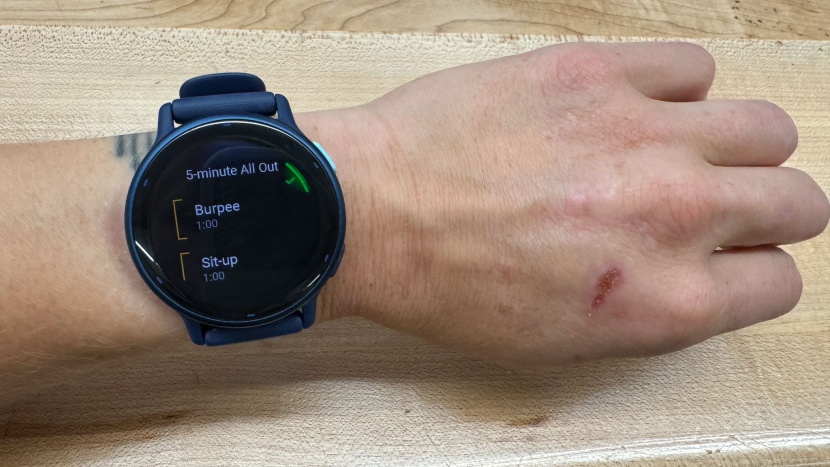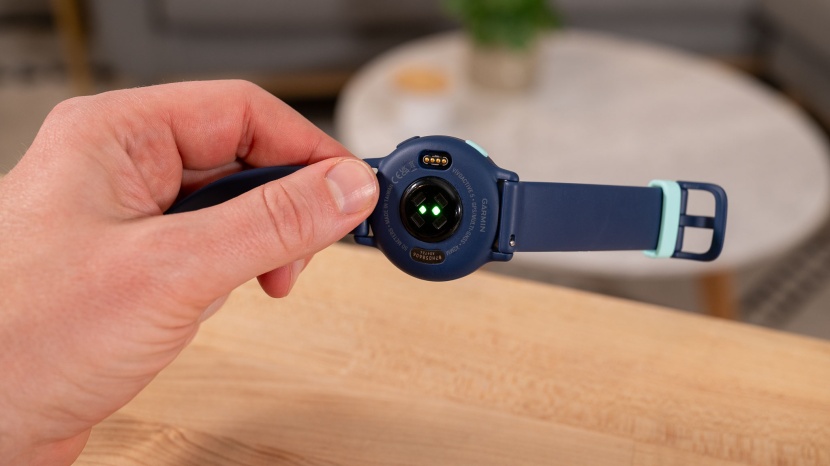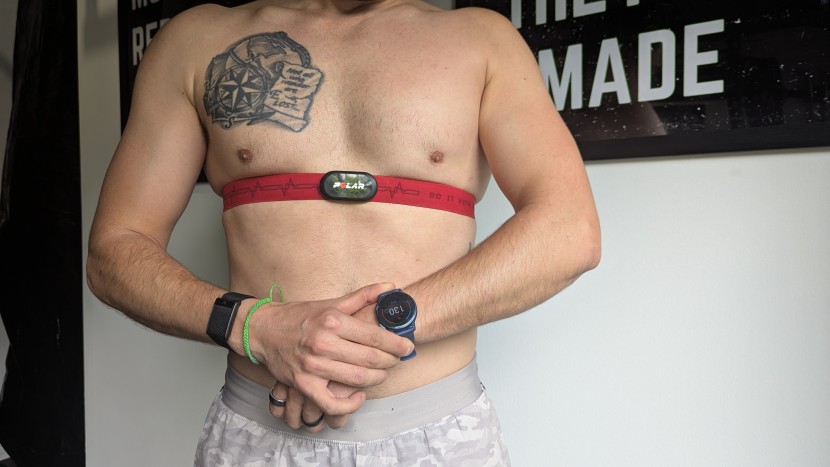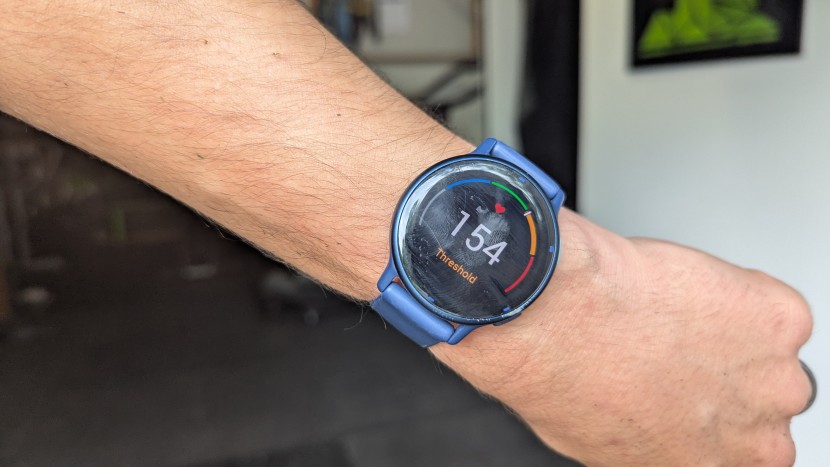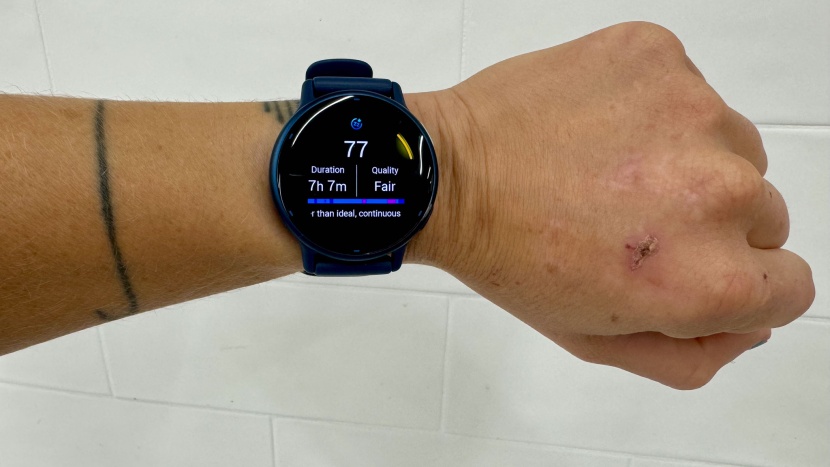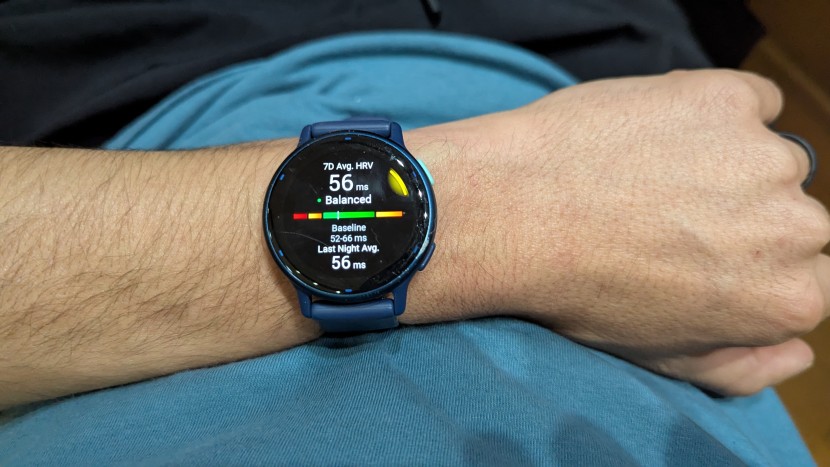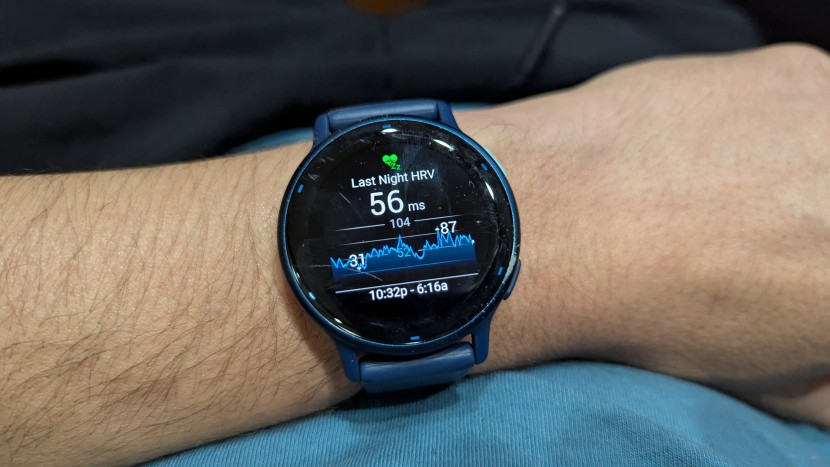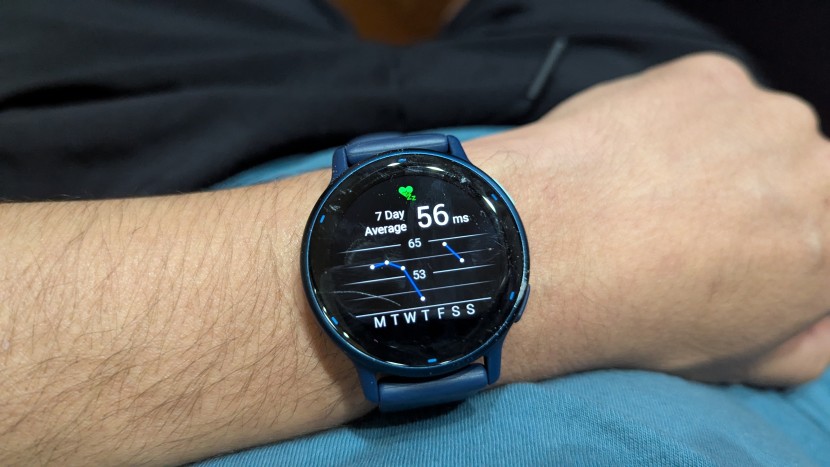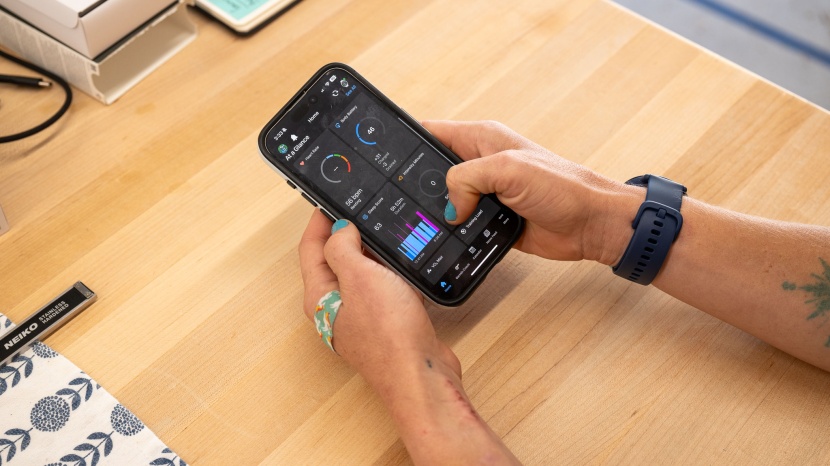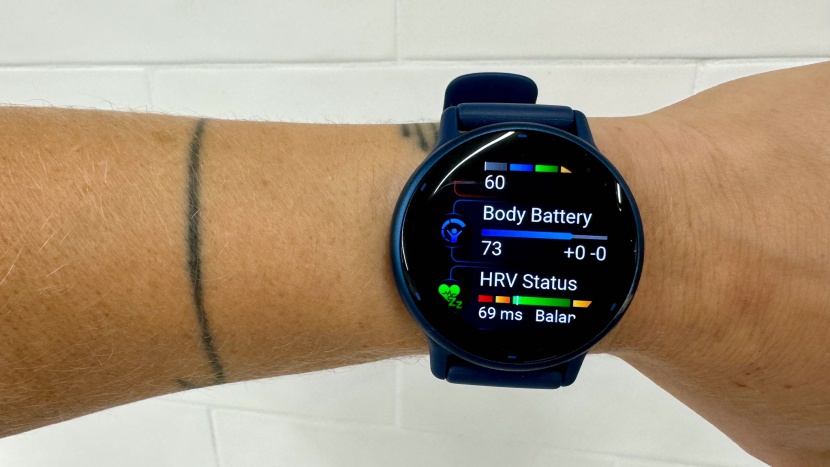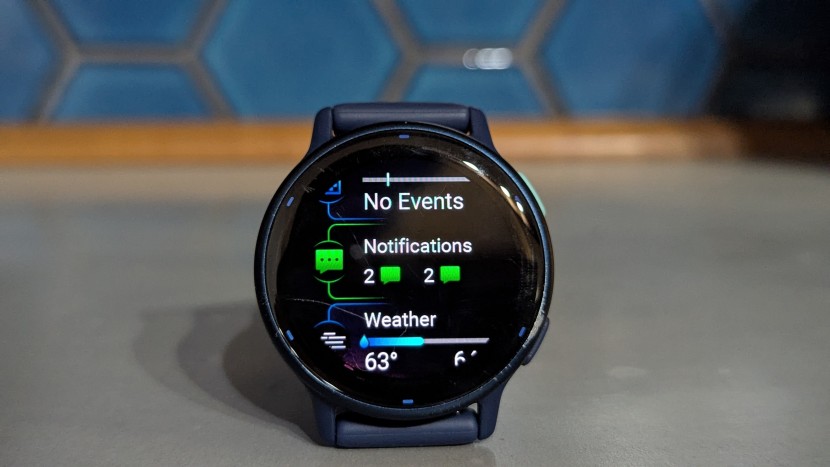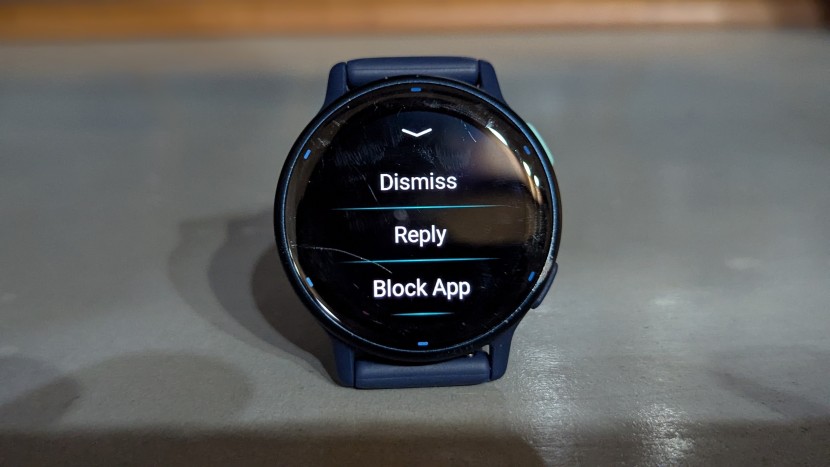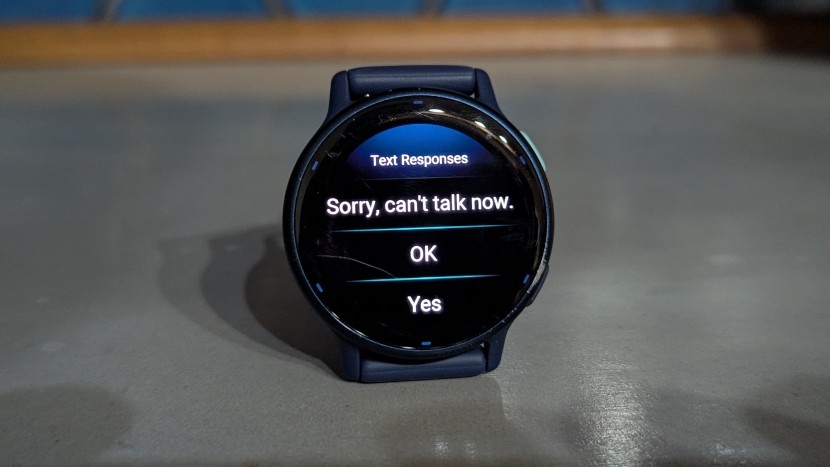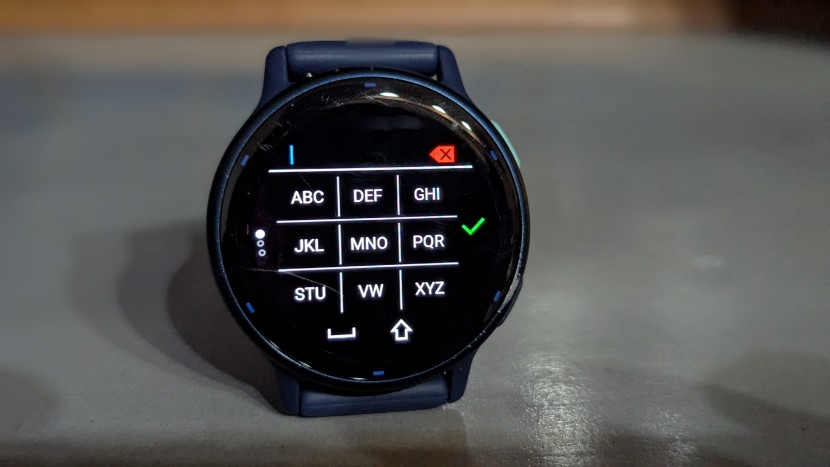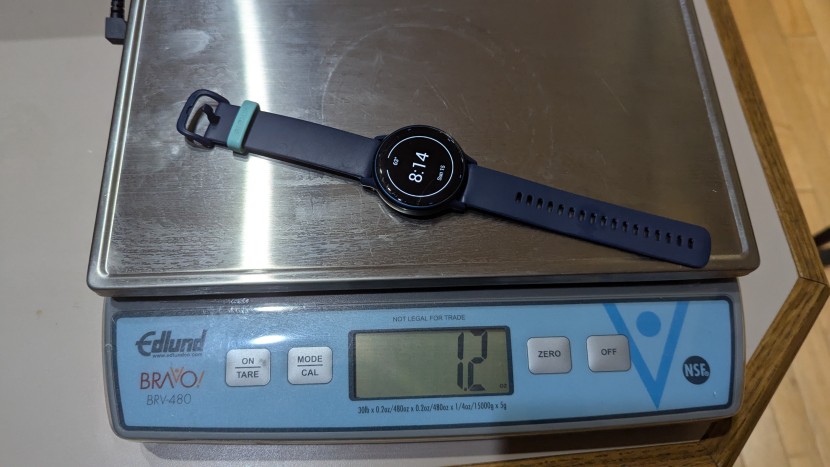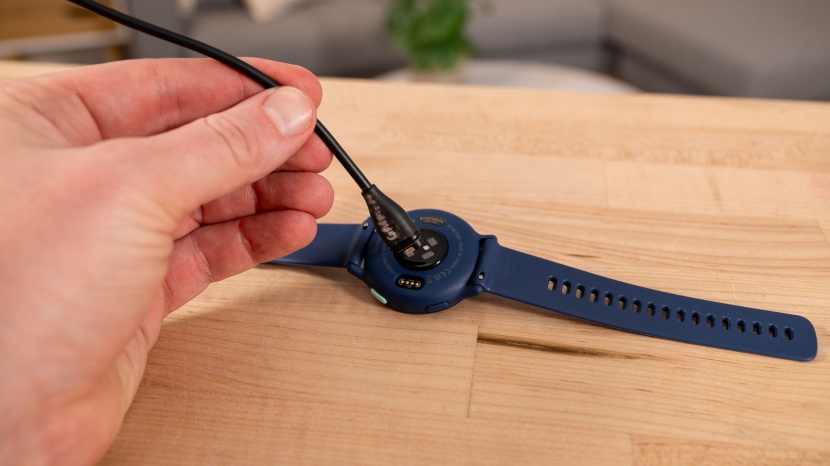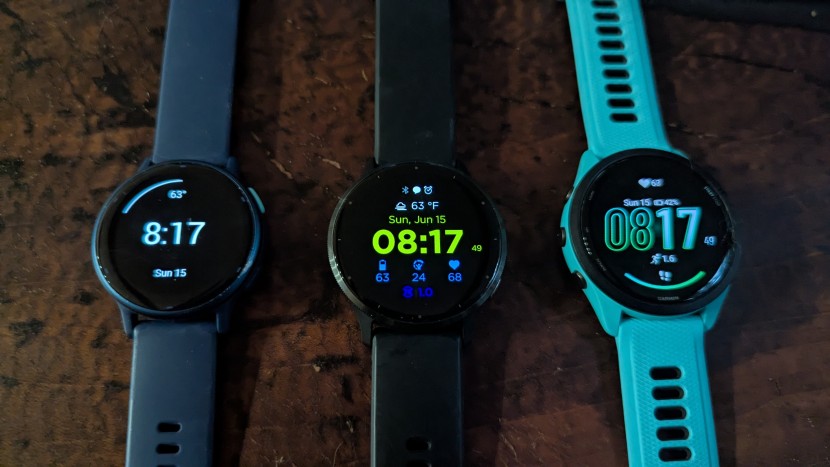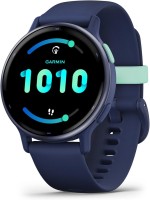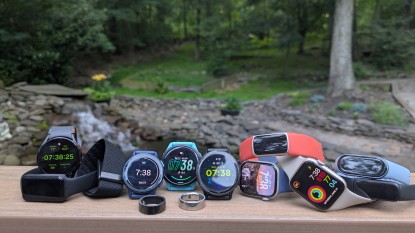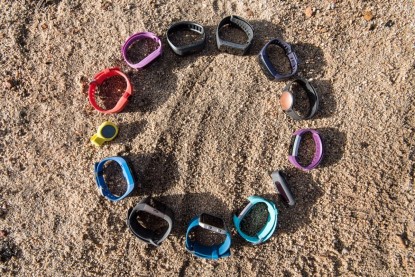
Our Verdict
Our Analysis and Test Results
The Vivoactive 5 is one of the more approachable devices in the Garmin lineup and is built with similar technology as their upper-tier devices, such as the Forerunner and Fenix series smartwatches.
Activity Tracking
The Vivoactive 5 delivers a lot of function thanks to its accurate GPS tracking, distance precision, the ability to autodetect walks and runs, and general workout tracking, but the elevation tracking leaves something to be desired. Our evaluation considered the full host of activities and metrics that this watch could track, but scoring was based predominantly on the features and accuracy of cardio tracking, workout tracking, and auto-detection of activities.
Cardio Tracking
The Vivoactive 5 packs a punch when it comes to tracking cardio workouts like a walk, run, or bike ride. This category of activities is where the most additional available data and tracking capabilities present themselves. The Vivoactive can track and display distance, speed, pace, heart rate, heart rate zone, elapsed time, and lap distance and time. Within the activity screen, you have the ability to customize several screens to show data fields at a glance, and you can even set custom alerts for things like laps, heart rate zones, and calories.
When on a run, ride, or in the gym, data fields are easy to read and relatively accurate. We especially liked the screen that showed our heart rate zone when we were working on steady-state cardio workouts. During our testing of fitness trackers, we noticed that your current pace field tends to fluctuate greatly, far more than reality. Despite that, we found the Vivoactive to be consistent and in line with our measured data, and never saw any distance, pace, or heart rate that was clearly a false outlier. We like that we can view a range of data by simply switching through the different screens.
Workout Tracking
Overall, we loved the workout tracking of the Vivoactive. We found the automatic rep counting feature to be one of the most accurate out of the trackers we tested, but don't expect anything revolutionary. For fitness trackers as a whole, rep tracking remains relatively inaccurate, especially on exercises that require complex or minimal movement. What we did appreciate is that the Vivoactive makes it easy to adjust the reps and weight after each set.
There are a variety of prebuilt workouts in the tracker, such as run, bike, strength, cardio, and HIIT, with the option to customize intervals, rounds, and rest periods. In fact, the Vivoactive functions a lot like a little workout buddy, communicating via vibrations and sound. Our only gripe is that you need to use the app to dig into your stats; on the Vivoactive, you just get a summary.
Auto Detect for Walks/Runs
With an ability to customize the autodetection to runs and walks, we were less impressed with the Vivoactive 5's ability in this area. “It failed to recognize and start tracking some of those activities, like a 5-mile hike we went on,” commented our lead tester. Other times, it picked up a run workout less than two minutes into the workout. It occasionally needed input to start tracking a mountain bike ride, but 90% of the time, it didn't need any prompting at all. We also found the auto-pause features on running and biking activities to be highly sensitive and accurate.
Other Tracking Features
There are over 50 specific activities available on the Vivoactive, but you can also rename and create custom activities to add more to your list. There isn't a huge variety of lifestyle activities for tracking, but the range of sports is suitable for most people. Across the majority of these activities, the only thing the Vivoactive will track is the total duration and heart rate, but there are some exceptions for activities like running, cycling, and swimming.
The Vivoactive 5 includes a GPS sensor and also works with GLONASS (Russian) and Galileo (European) satellite navigation systems. Some other fitness trackers use the GPS antenna in a connected smartphone (or cell tower triangulation) for geolocation, but the Vivoactive 5 is self-contained and can provide distance, pace, and speed without a tethered smartphone.
The biggest miss for the Vivoactive 5 (especially considering it was present in the Vivoactive 4) is the lack of a barometric altimeter. For most people, this means the watch won't track the flights of stairs you climb in a day, a common metric for most people. The Vivoactive determines elevation gain and loss by overlaying your route on a digital map. It works, but it isn't as accurate as direct measurement with a barometric altimeter. For some reason, the Vivoactive doesn't show elevation data on the screen.
Lifestyle Tracking
For the most part, the Vivoactive is a top performer in this broad metric. We evaluated the step tracking accuracy of each tracker and found all to be accurate across a measured course, and reasonably in line with real-world step estimates.
In our testing, we compared the Vivoactive 5's heart rate monitoring against a Polar heart rate monitor (considered the industry standard for accuracy). The Vivoactive 5 demonstrated excellent overall accuracy, with one specific limitation: During recovery periods after intense intervals, when heart rate was decreasing, the Vivoactive 5 had a slight lag in detecting these changes. While it did catch up to the actual heart rate within a few seconds, this brief delay was consistently noticeable when compared to the Polar monitor's readings.
According to our lead tester, Garmin “provides you a ton of sleep data but breaks it down in a way that most people can understand.” We also appreciate that the Vivoactive 5 makes it possible to easily track sleep (including restless moments, resting heart rate, average sleeping heart rate, respiration rates, and sleep stages).
We loved seeing all of this data both on the watch and in the Garmin app, and we gained a lot of insight into our sleep habits. We did find, however, that even though the Vivoactive 5 accurately captured when we went to bed and when we got up in the morning, it didn't always capture moments of wakefulness during the night. To be fair, even leading technology in this field that measures sleep stages is far less than accurate, so we're pretty happy when trackers can detect when we fall asleep, wake up, and actually get up out of bed.
Garmin provides a variety of health indicators that can be measured and tracked in addition to heart rate. There are monitors for inactivity, blood oxygen, respiration, stress, menstrual tracking, VO2 max, and training load/recovery. Some of these other features the Vivoactive can help you track, but require manual input on your behalf, like blood oxygen, calories, menstrual tracking, and weight change. The Vivoactive 5 pairs with Garmin scales, provides a health snapshot (based upon average and max heart rate, stress, and heart rate variability), measures respiration, and offers a sleep coach that recommends how many hours you need.
Data & Dashboards
The Vivoactive presents data well throughout the watch and app, and no subscription is required.
We like the Garmin Connect app, which contains graphs for every tracked metric. We have read of some users who dislike it, but it works well in our opinion, and we feel that it is easy to access our data and gain insight into our fitness level. There's a great blend of both snapshot and at-a-glance views, as well as the ability to drill down into detailed data and analysis. One of our favorite features was being able to overlay two different data points on a chart following our activities, such as comparing our heart rate and running pace.
For a smaller watch, we're also pleased with the ability to view data right on our wrist. The different health widgets on the Vivoactive are bright, bold, and easy to read, and provide an impressive amount of data. You can view detailed sleep analysis, workout summaries, and other health metrics right on screen.
Features & Ease of Use
Overall, it is quick and easy to get the Vivoactive 5 set up for use along with the Garmin Connect app. It requires a few different activities and recovery scores over a couple of days to generate certain metrics, but it gets to know the user quite quickly.
Our lead tester shared, “I really appreciate how Garmin makes data accessible during workouts. Your info is presented in a way that helps inform you of where you're at while exercising rather than requiring you to stop what you are doing to check in” with an app.
Selections are made using two buttons on the bezel and standard touch screen motions. We never accidentally toggled anything we didn't want to, and the screen is responsive to quick taps and swipes. The screen is also easy to read, and the colors are vibrant.
You can receive and respond to texts, control music, and access a mobile wallet with the Vivoactive 5. We noted that we could view photos in a text message and send quick reply messages right from the watch when paired with an Android phone. These features aren't available with an iPhone, though. There is an option for “Quick Reply” to a text, or you can customize replies through the Connect app. It also seamlessly connects to apps like Strava, so you don't need to take any additional steps to upload or share workouts.
We love the fact that the Vivoactive 5 offers a ton of functions and excellent data analysis without a subscription! There are options to personalize your Garmin through Garmin Connect IQ (another free app), and some of those options require an additional cost since they involve third-party developers.
Wearability
We evaluated how wearable each tracker was because, in order to gather the most comprehensive data, you'll need to wear a tracker as much as possible. We factored in things like the size and feel of the device, comfort, fit, and perceived style. The Vivoactive 5 is fairly comfortable and one of the smaller Garmin watches in our lineup. The watch band is comparable to most other bands and otherwise offers lots of adjustability.
“It doesn't take long to get used to its presence,” commented our lead tester, “I can usually forget I am wearing it throughout the day.” Garmin seems to have found a wonderful middle-ground with the Vivoactive 5: it is big enough to actually read while running and working out, but it isn't so big that it causes discomfort. It also has a great fit on the wrist, according to our testers, who also called it “light and airy.” In addition, it doesn't produce painful pressure points with the sensors. The watch comes in one size with four color options.
Battery
Our extensive testing trials of the Vivoactive battery revealed excellent performance. Although the battery didn't last 11 days for us, as Garmin claimed, we acknowledge that we were tracking a handful of activities each day. It would most likely last that long with normal use. As much as we appreciate the battery life of the Vivoactive, we aren't huge fans of the charging connection, which can be knocked loose by slight jarring motions. If everything stayed connected, however, the battery boosted fairly quickly (required 1.7 hours to go from 0% to 100%).
Should You Buy the Garmin Vivoactive 5?
The Vivoactive 5 is an excellent option for someone who wants an accurate GPS fitness tracker that can help them achieve athletic goals, but is mindful of the high cost of top-tier trackers or those that require a subscription for fitness data analysis. If you are training for your first marathon, 10K, or trail running race, we think the Vivoactive 5 is a great choice. It will be a reliable training companion and will serve you well into the future.
What Other Fitness Trackers Should You Consider?
If you are more interested in lifestyle tracking or need a tracker that is more minimal, we recommend taking a close look at the Whoop 5.0 or the Fitbit Charge 6. Both are unobtrusive and offer a number of lifestyle tracking features that can help you gain insight into your general fitness and health habits. If money is not an object and you want the best device for athletes, then you'll be interested in the rich functionality of the Garmin Forerunner 265 or Garmin Venu 3, both of which have advanced activity tracking capabilities.
| Awards | Best Overall |
|---|---|
| Price | $270 List Check Amazon (on sale!) |
Overall Score  |
|
| Star Rating | |
| Bottom Line | This slim watch packs plenty of features that athletes will crave in a more compact and sleek package that blends into everyday life more than others |
| Pros | Accurate activity & health tracking, high performance on a budget, simple and easy to use, robust features |
| Cons | No elevation tracking |
| Rating Categories | Garmin Vivoactive 5 |
| Activity Tracking (20%) | |
| Lifestyle Tracking (20%) | |
| Data & Dashboards (20%) | |
| Features & Ease of Use (20%) | |
| Wearability (10%) | |
| Battery (10%) | |
| Specifications | Garmin Vivoactive 5 |
| Measured Weight | 1.2 oz |
| Measured Dimensions | 1.6" x 1.8" |
| Measured Heart Rate Accuracy | 98.61% |
| GPS Tracking | Yes |
| Supported Operating Systems | Apple iOS & Android OS |
| Water Resistance | 5 ATM (50m) |
| Altimeter (Elevation) | No |
| Screen Type | AMOLED |
| Sensors | Accelerometer Ambient Light Blood Oxygen Compass GPS Heart Rate Thermometer |
| Claimed Battery Life | Smartwatch mode: Up to 11 days (5 days display always-on) Battery Saver Smartwatch mode: Up to 21 days GPS-Only GNSS mode: Up to 21 hours All-Systems GNSS mode: Up to 17 hours All-Systems GNSS mode with music: Up to 8 hours |
| Smart Features | Notifications Preset Message Response Wallet Music Control |
| Trackable Activities | Run Cycle Strength Swim Paddle Sports / Team Sports Snow Sports Golf Yoga |
| Trackable Lifestyle Metrics | Heart Rate Sleep Steps Stress |
| Safety Tracking Features | Incident Detection During Select Activities, Incident Detection Alert on Phone for Wearables, Assistance, Livetrack |
| Other Data Tracking Capabilities | Advanced Running Metric Tracking Advanced Swimming Metric Tracking Advanced Golf Features Outdoor Navigation Features Fishing Features Cycle Accessory Compatible Womens Health Data Entry & Tracking |
| Coach / Predictive Assistance | Sleep Coach Training Tips Health Tips |


